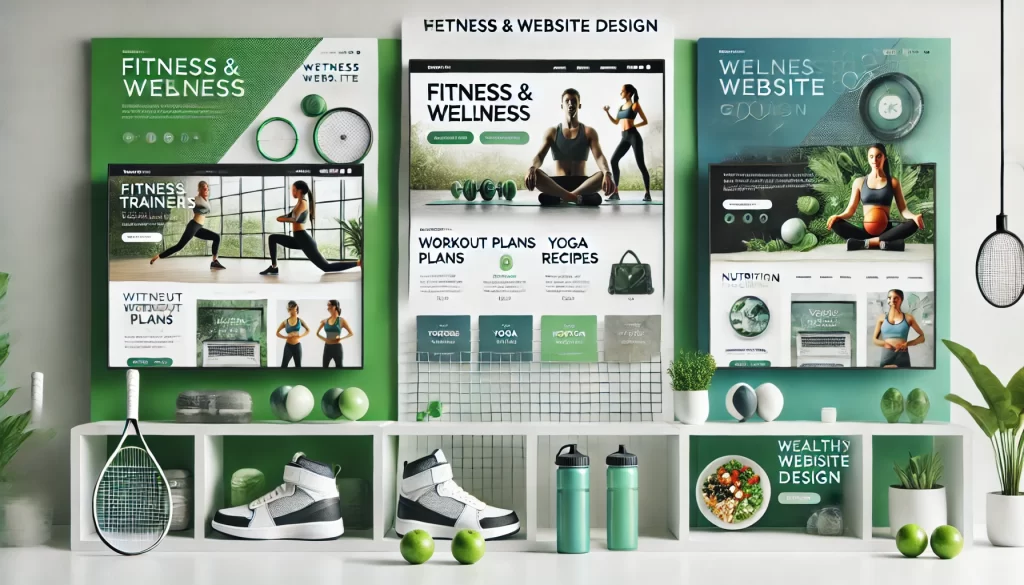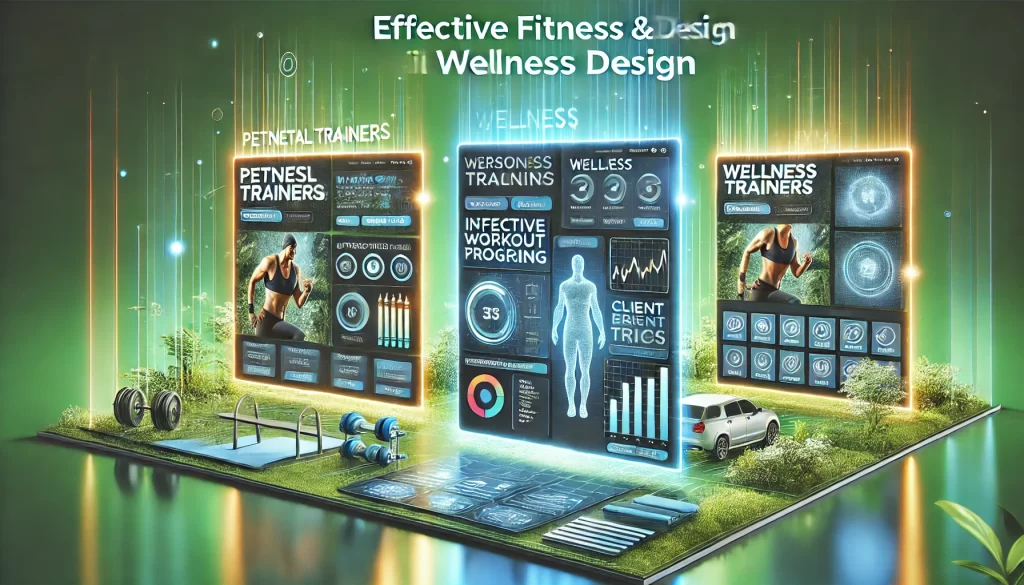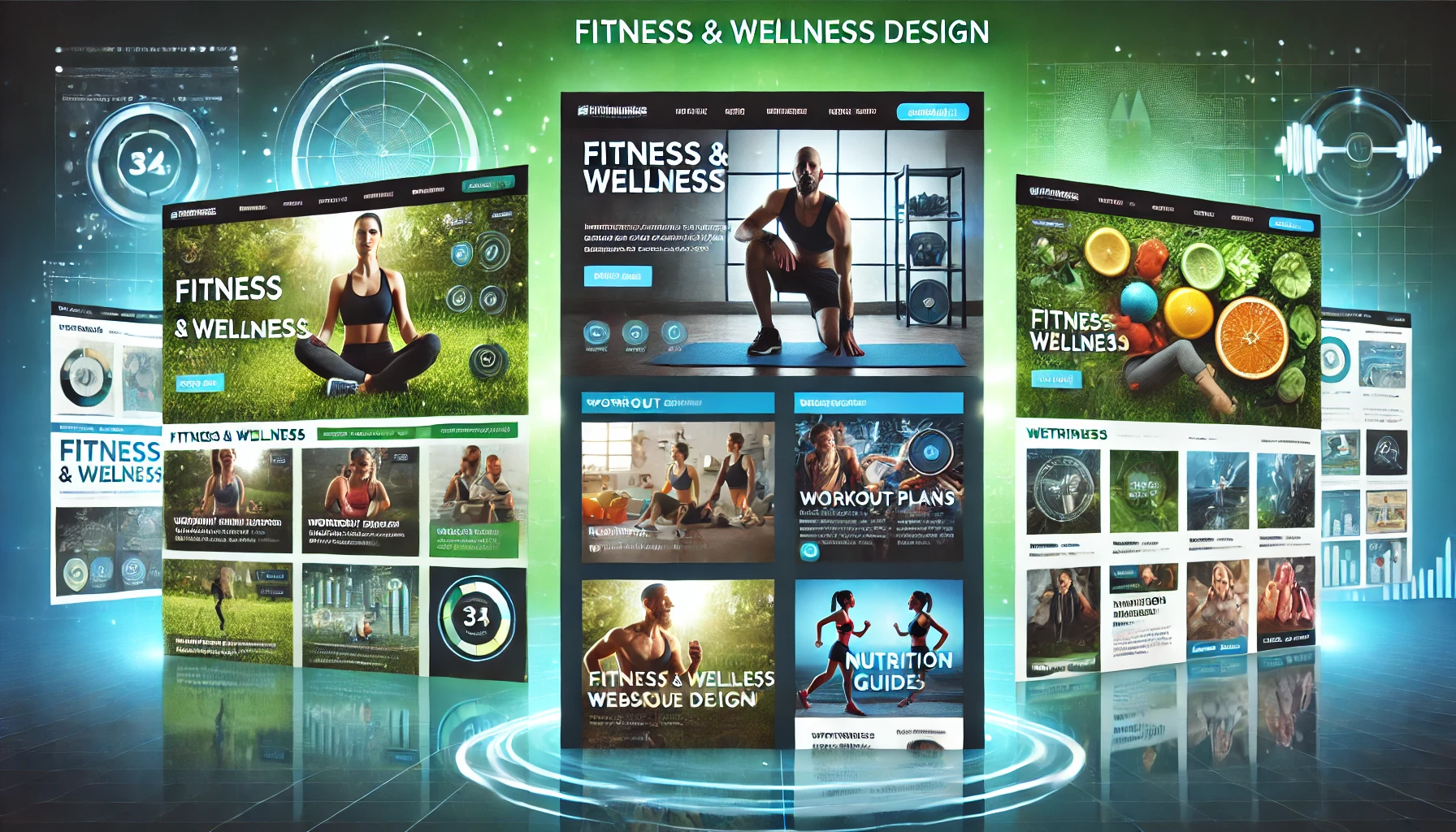Introduction
The digital age has fundamentally shifted how we approach health, fitness, and wellness. More people than ever are turning to the internet to find workout routines, nutrition advice, and holistic health strategies. As a result, fitness and wellness websites have become essential tools for individuals and businesses looking to engage, inform, and guide their audiences. For fitness trainers, nutritionists, and wellness experts, having a strong digital presence is non-negotiable. Whether you’re offering fitness programs, nutrition plans, or wellness resources, your website should not only look appealing but also serve as a hub of valuable, authoritative content that encourages engagement. We’ll explore fitness and wellness website design best practices, content strategies, and examples of successful websites that engage audiences and drive results. By following these guidelines, you’ll be able to create a website that stands out in a competitive digital landscape.

Related Posts
- Healthcare Website Design Essentials & Best Practices
- Website Design for Specific Healthcare Niches
- Key Elements of Effective Healthcare Websites
Designing Fitness and Nutrition-Focused Websites
User Experience – The Heart of Fitness and Wellness Websites
For fitness and wellness websites, the user experience (UX) is paramount. Visitors to these sites often seek not only information but also inspiration and motivation. A well-designed website can motivate users to take the next step—whether that’s signing up for a program, subscribing to a newsletter, or purchasing products.
Key Design Principles for Fitness Websites
- Responsive Design: Fitness and wellness enthusiasts browse on multiple devices, smartphones, tablets, and desktops. Ensuring that your website is mobile-friendly is crucial. A responsive website adapts to different screen sizes, providing a smooth user experience on all devices.
- Visually Engaging Layout: Bright, energetic colors and high-quality images related to fitness, health, and nutrition can inspire users. Choose imagery that reflects the goals of your audience, whether that’s weight loss, muscle gain, mental clarity, or holistic health.
- Clear Navigation: Fitness websites often feature numerous sections like workout plans, nutrition tips, product recommendations, and blog posts. It’s crucial to keep your website navigation simple and easy to understand, so visitors can quickly find what they’re looking for.
- Calls to Action (CTAs): Clear and compelling CTAs are essential for converting visitors into customers. Whether it’s prompting visitors to book a session, download a fitness guide, or purchase a health product, CTAs should be strategically placed throughout your website.
Examples of Best Health and Fitness Websites
Many successful fitness and wellness websites stand out due to their exceptional design, high-quality content, and user-friendly features. Below are a few examples of websites that have excelled in this area:
MyFitnessPal
MyFitnessPal, a well-known fitness and nutrition website, boasts a clean design with easy navigation. The homepage features intuitive navigation that leads visitors to workout plans, nutrition tracking tools, and fitness resources. Their blog section is highly educational, offering tips on maintaining a healthy lifestyle.
Beachbody
Beachbody is another exemplary fitness website that has mastered both design and content. Their site is full of vibrant images, motivational messaging, and a strong community focus. The user-friendly layout makes it easy to navigate through workout programs, health products, and community forums.
Precision Nutrition
Precision Nutrition stands out by offering evidence-based nutritional advice and coaching services. Their website features a straightforward layout, with educational resources front and center. The emphasis is on providing expert knowledge in a digestible and user-friendly format.

Content Ideas for Fitness Programs, Blog Posts, and Product Offerings
The right content strategy can make or break your fitness and wellness website. Content that educates, entertains, and engages can build your authority in the industry and turn casual visitors into loyal customers. Here’s how to plan your content:
Fitness Program Ideas
When it comes to fitness, people are often looking for personalized or easy-to-follow programs. Creating specific workout plans that cater to different fitness levels (beginner, intermediate, advanced) or goals (weight loss, strength training, flexibility) can attract a wide range of users.
Popular Fitness Program Ideas
- Beginner Workout Plans: A comprehensive guide that helps newcomers start their fitness journey with simple exercises.
- Fat Loss Programs: Detailed plans focusing on fat-burning exercises paired with nutritional advice for optimal results.
- Strength Training Routines: Progressive programs that increase strength through resistance exercises.
Blog Post Ideas for Fitness and Wellness Websites
Content is king when it comes to attracting organic traffic and keeping visitors engaged. Below are several blog post ideas that resonate well with fitness audiences:
- “5 Mistakes Beginners Make in the Gym”: A practical blog post for beginners, addressing common mistakes that hinder progress.
- “The Best Post-Workout Meals for Recovery”: A nutrition-focused post that offers easy meal ideas for optimal recovery after exercise.
- “How to Stay Motivated to Work Out”: Tips and strategies to keep fitness enthusiasts engaged and consistent with their workouts.
- “The Mental Health Benefits of Exercise”: A holistic view that emphasizes how exercise improves mental well-being, which can be a great way to connect with a broader audience.
Related Posts
- Importance of Good Website Design for Healthcare and Wellness
- Health & Wellness Website Design and Marketing
- Case Studies of Top Healthcare Websites
Product Offerings – What to Include in Your Fitness Website
Selling products on your fitness website can provide an additional revenue stream. Fitness and wellness products could include:
- Supplements: Protein powders, vitamins, and health supplements.
- Fitness Equipment: Yoga mats, dumbbells, resistance bands, etc.
- E-books: Digital guides for meal plans, workout routines, and mindfulness.
Building Trust Through Wellness Website Content
For fitness and wellness websites, building trust is crucial. Here are several strategies to enhance trust and credibility:
Expert Authorship
Always feature expert authors for your blog posts, workout plans, and wellness advice. Whether you’re a fitness trainer, nutritionist, or wellness coach, ensuring that your content is backed by qualifications and experience builds credibility.
Testimonials and Reviews
Showcase client testimonials and success stories to demonstrate the effectiveness of your services. Real-world experiences help visitors feel more comfortable engaging with your fitness programs or purchasing products.
Accurate, Research-Backed Content
Provide evidence-based content that aligns with the latest research in fitness, nutrition, and wellness. When people trust that your advice is scientifically sound, they are more likely to stick with your programs and recommend your website to others.
Privacy and Security
For websites that offer e-commerce or online booking services, it’s crucial to assure visitors that their data will be secure. Display your privacy policy clearly and ensure that all online transactions are handled securely.
FAQs
What are the most important elements of a fitness website?
A fitness website should prioritize clear navigation, responsive design, engaging CTAs, and high-quality content that offers real value to visitors.
How can I improve the design of my fitness website?
Improving your fitness website’s design involves using a clean, easy-to-navigate layout, adding motivational and inspiring imagery, and ensuring mobile optimization.
What content should be featured on a fitness website?
Fitness websites should feature educational blog posts, fitness program offerings, meal plans, product recommendations, and customer testimonials to establish authority.
How do I build trust with visitors on my fitness website?
Build trust by providing expert-authored, research-backed content, featuring success stories, offering transparent privacy policies, and using customer reviews.
Key Takeaways
Creating a standout fitness and wellness website requires more than just an appealing design. A website must serve as a comprehensive resource for users, offering tailored fitness programs, educational content, and trustworthy services. By following best practices in web design and content creation, you can engage your audience and build a thriving online community.
- User-centric design is key to a successful fitness website. Make it responsive, visually appealing, and easy to navigate.
- Content is essential for driving traffic and engagement. Offer valuable, educational posts and fitness programs.
Building trust through expert content, testimonials, and security ensures long-term customer loyalty.
